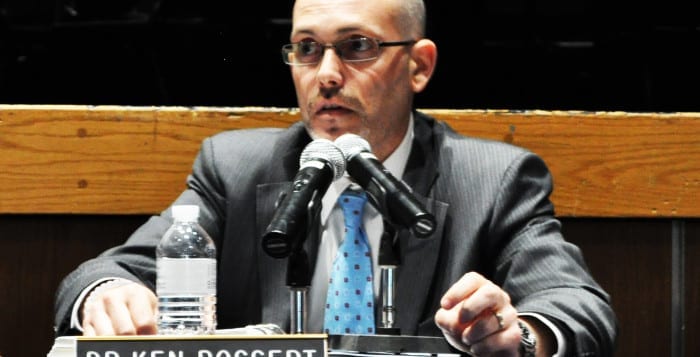Port Jefferson classrooms tech it out

Port Jefferson schools will put more money toward using modern technology in the classroom next year.
Following a presentation from the staff technology committee at a board of education meeting Tuesday night, the trustees approved a request to spend about $17,000 on iPad tablets and Chromebook computers to assist instruction.
The district began using iPads in elementary classrooms in the 2013-14 school year on a pilot basis. After receiving a positive response to the tablets, the school board tripled the number of tablets in the current school year, to three carts of iPads for the teachers to rotate among their classrooms. The board’s approval will bring the number of carts next school year up to four, which officials said would be the program’s final expansion — moving forward, money would be spent on replacing iPads, not adding more to the supply.
According to Christine Austen, the district’s K-12 assistant principal and a technology committee member, each teacher could potentially have the iPads for five weeks of instructional use with those four carts.
The additional iPads will mean there will roughly be one for every five students, she said.
In classrooms where teachers are using the tablets, Austen said, students are more engaged and there are more opportunities for the kids to collaborate with one another, among other benefits.
Although the school board supported the iPad expansion, President Kathleen Brennan and Trustee Bob Ramus said they wanted to see more data on the technology’s effect on student performance. Ramus pointed out that the board had requested such information during previous presentations on the iPad program.
But Superintendent Ken Bossert said the matter is not so simple.
“When we talked about what a researcher would do to develop a model to measure that impact, it would be to give a class full-time use of the iPads for all initiatives and deny another class any use and then measure the achievement levels between the two. We weren’t comfortable with that model.”
He said the district would work to get more data on student performance, but there are ways to measure how much a student is learning within different educational applications on the iPads “and we saw student growth within the apps.”
There is also a staff development element — Austen said some teachers still need training to effectively use the tablets in their classrooms, as only about 69 percent of the staff is using them this year.
Another piece of the district technology program is using laptops with older students to access Google applications. Some teachers have incorporated those free applications — which are collectively known as Google Classroom and include functions like word processing, survey, slideshow and spreadsheet tools — into their lessons already.
According to the technology committee’s presentation, the Google system makes it easy to create assignments and grade them, encourages collaboration, organizes students’ class materials and reduces the use of paper. It also “provides students an opportunity to engage in an online learning environment prior to attending college.”
Austen said the district would like to start replacing “aging laptops” with Chromebooks, which run on Google software and have the applications built in. They are also less expensive than other laptops and run faster.
Roughly two-thirds of the cost for the Chromebooks, Bossert said, will be covered by state aid.






